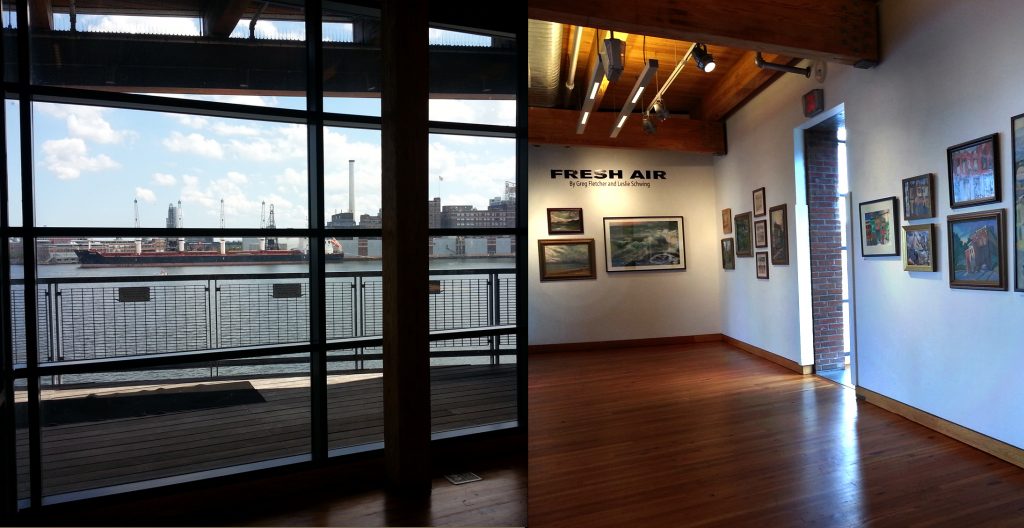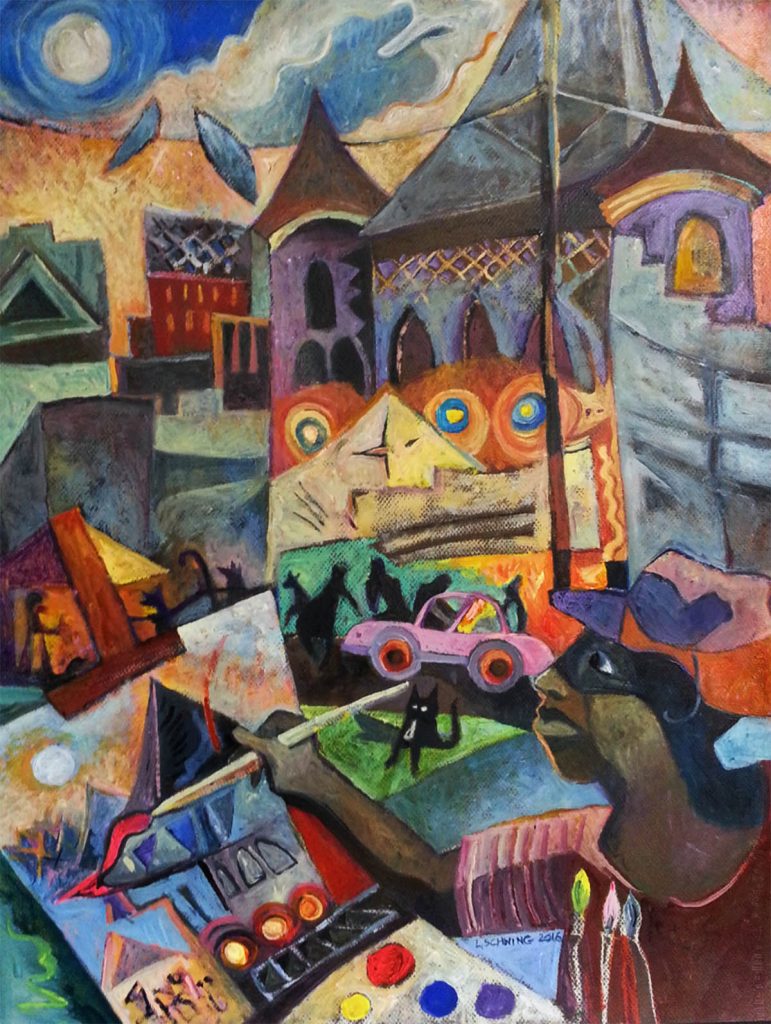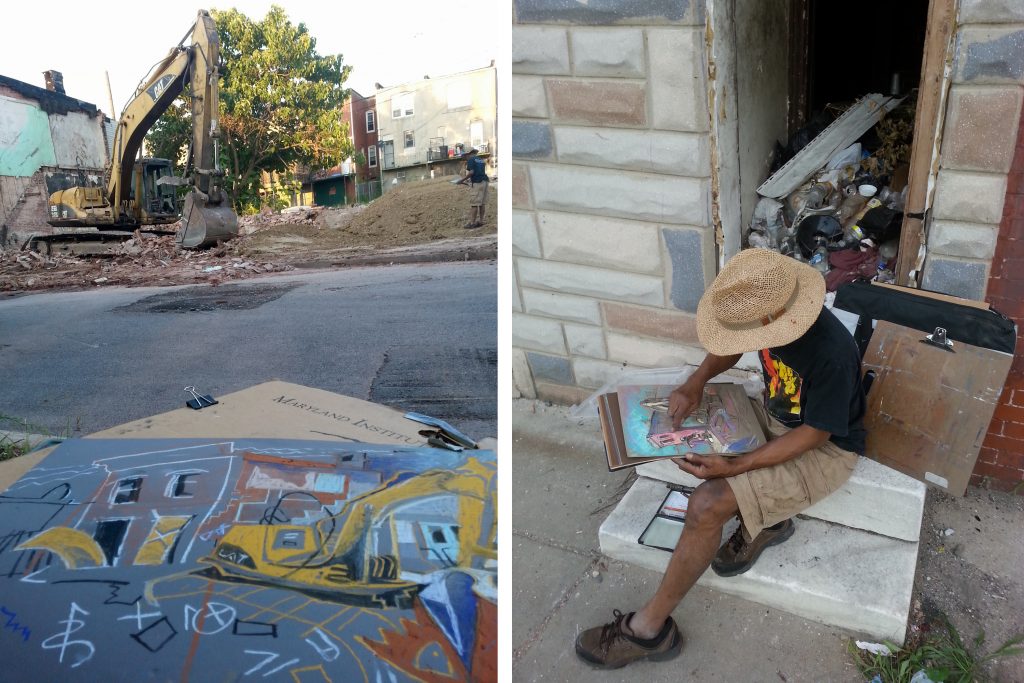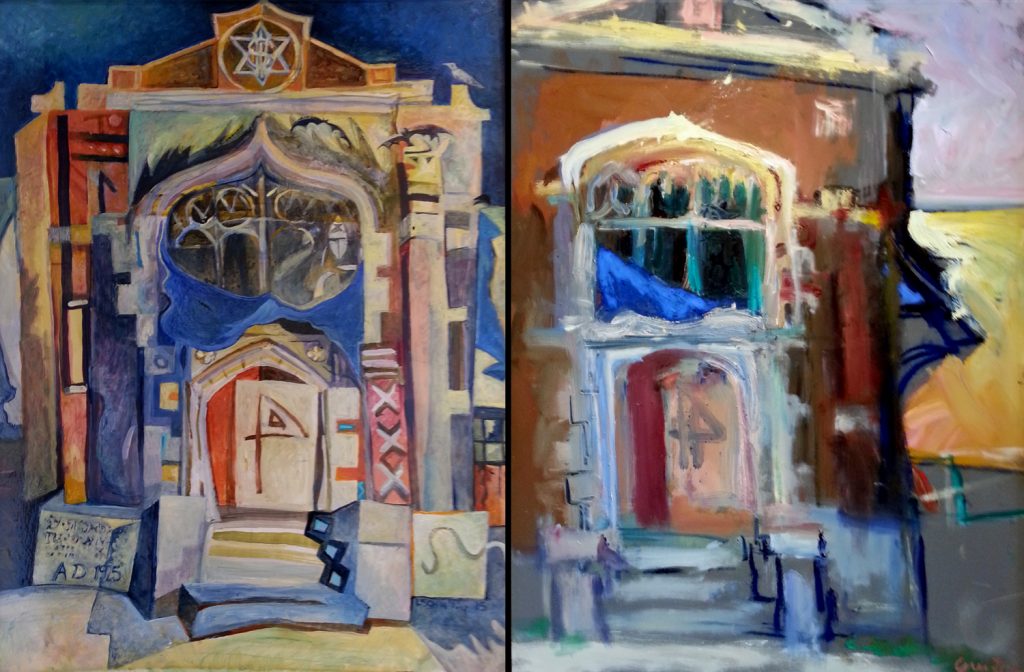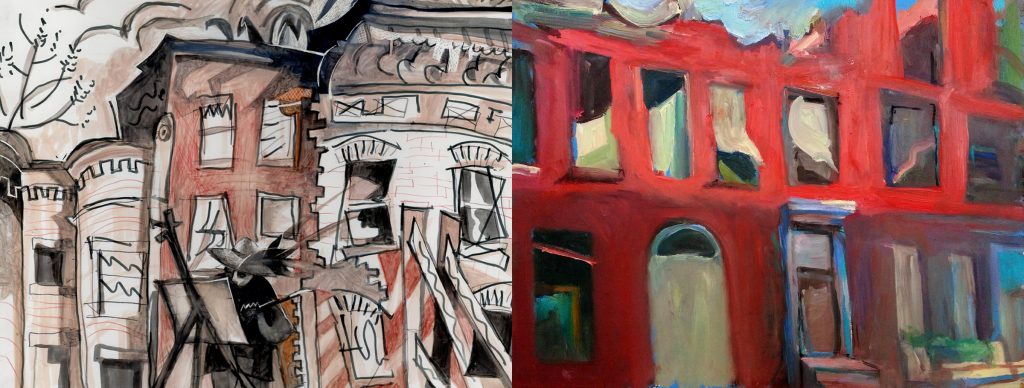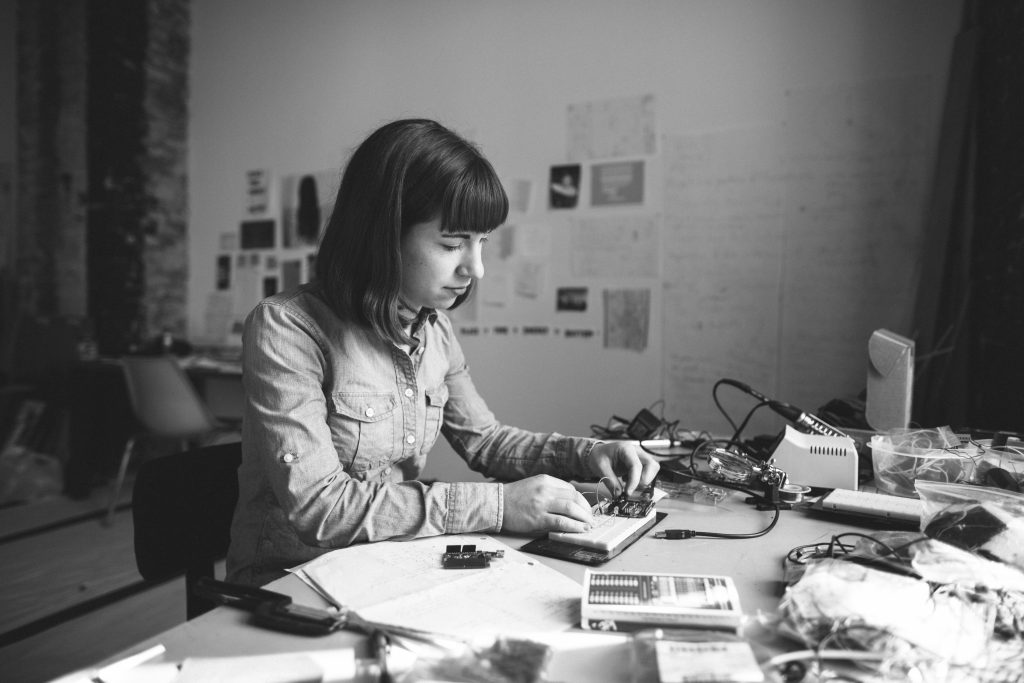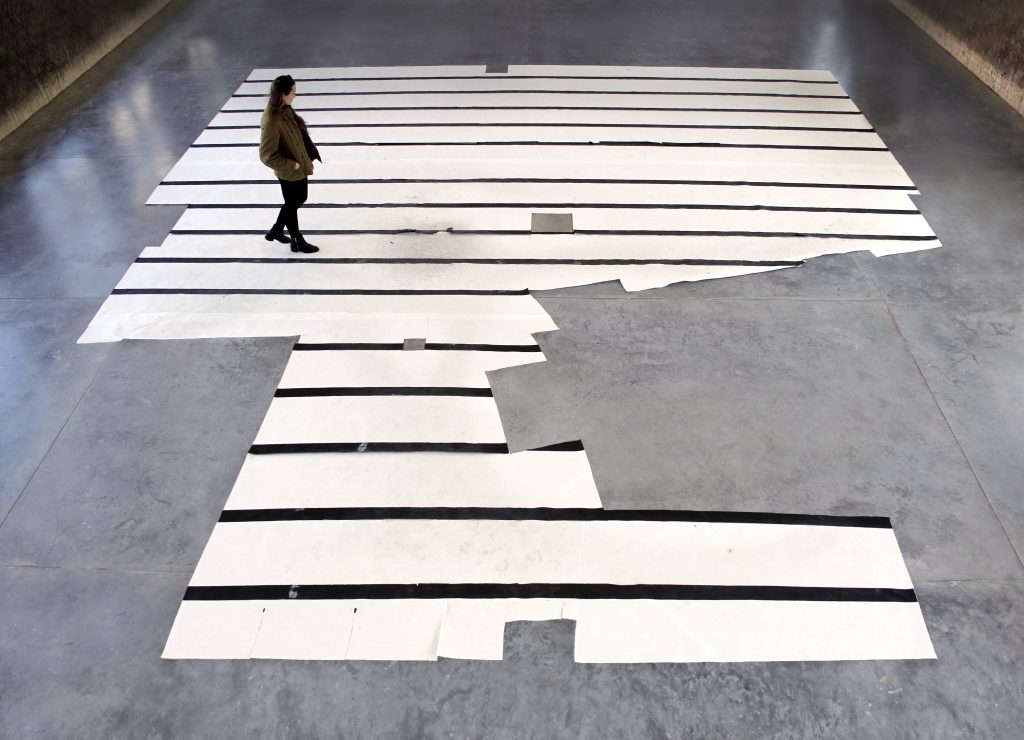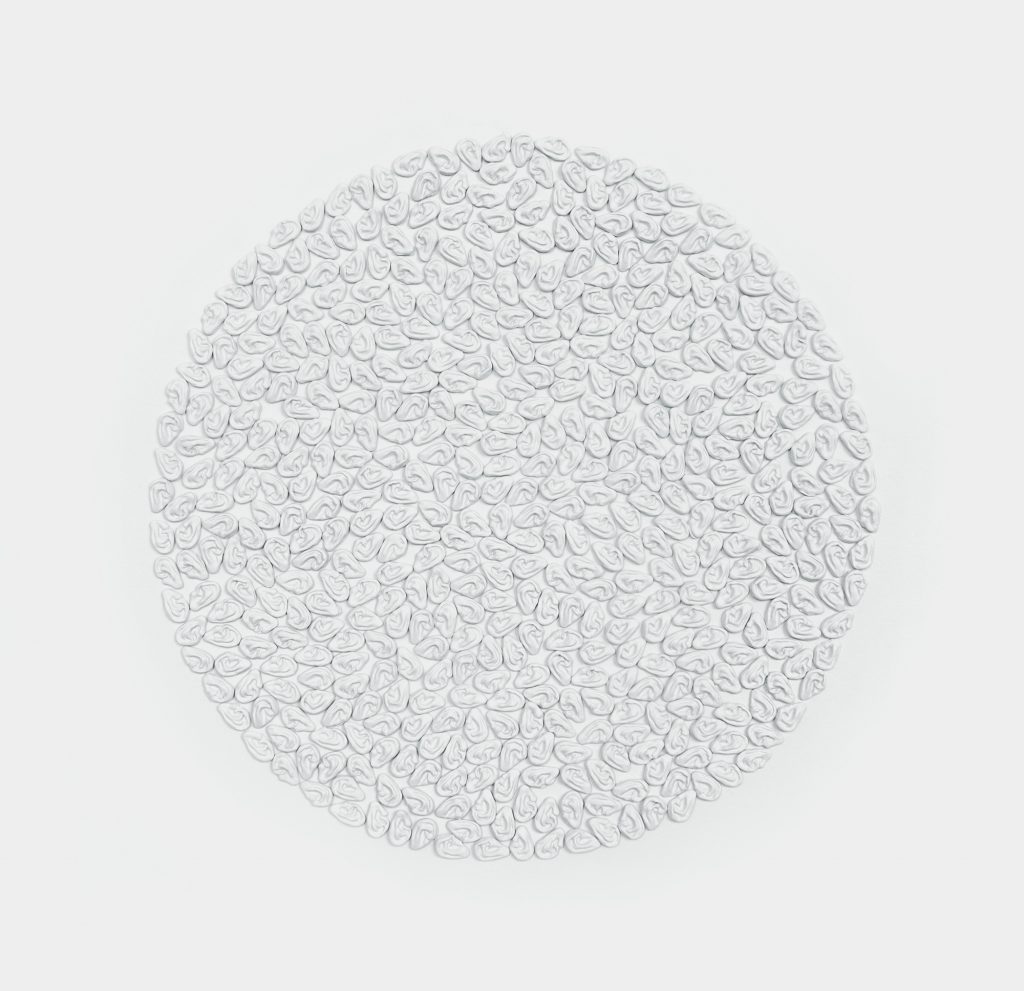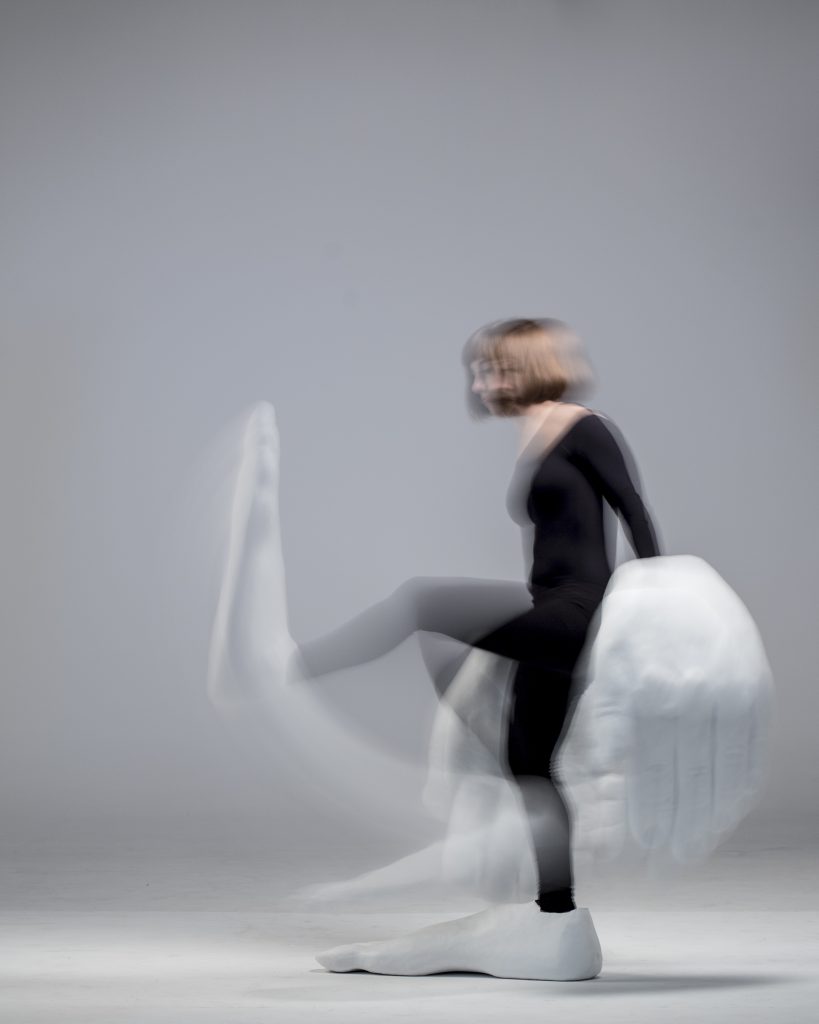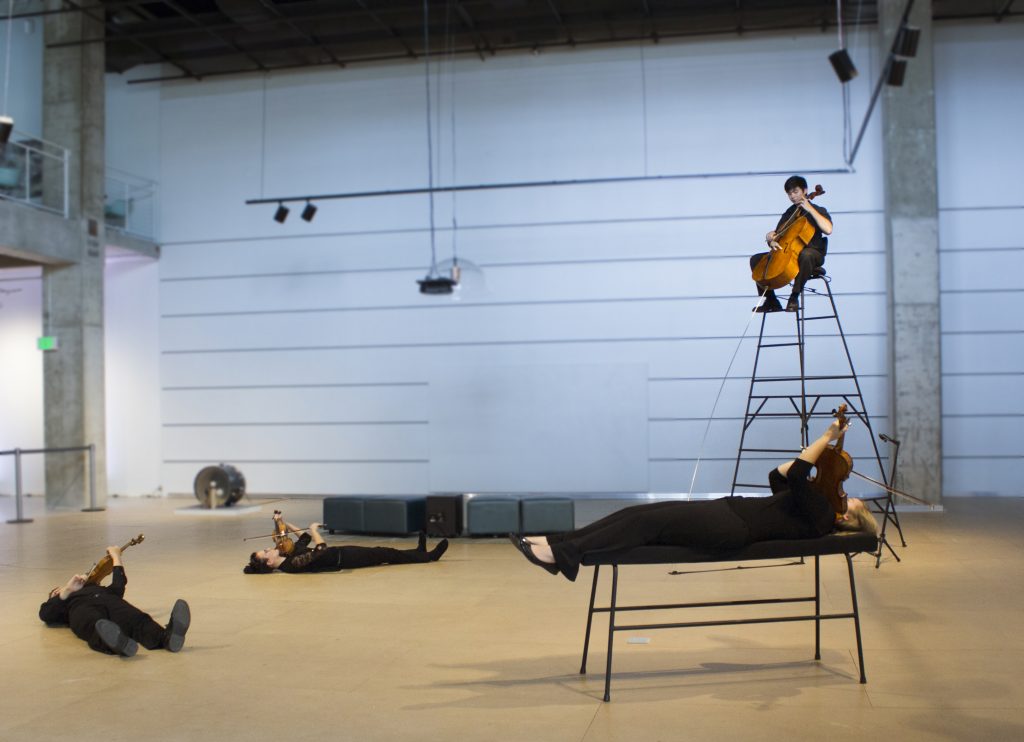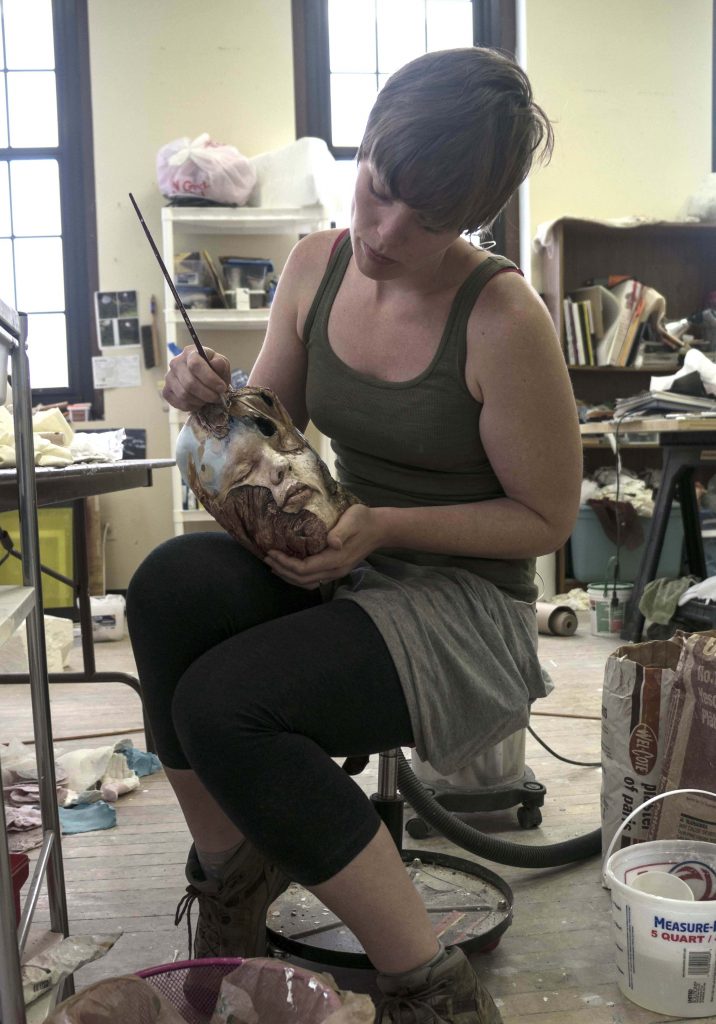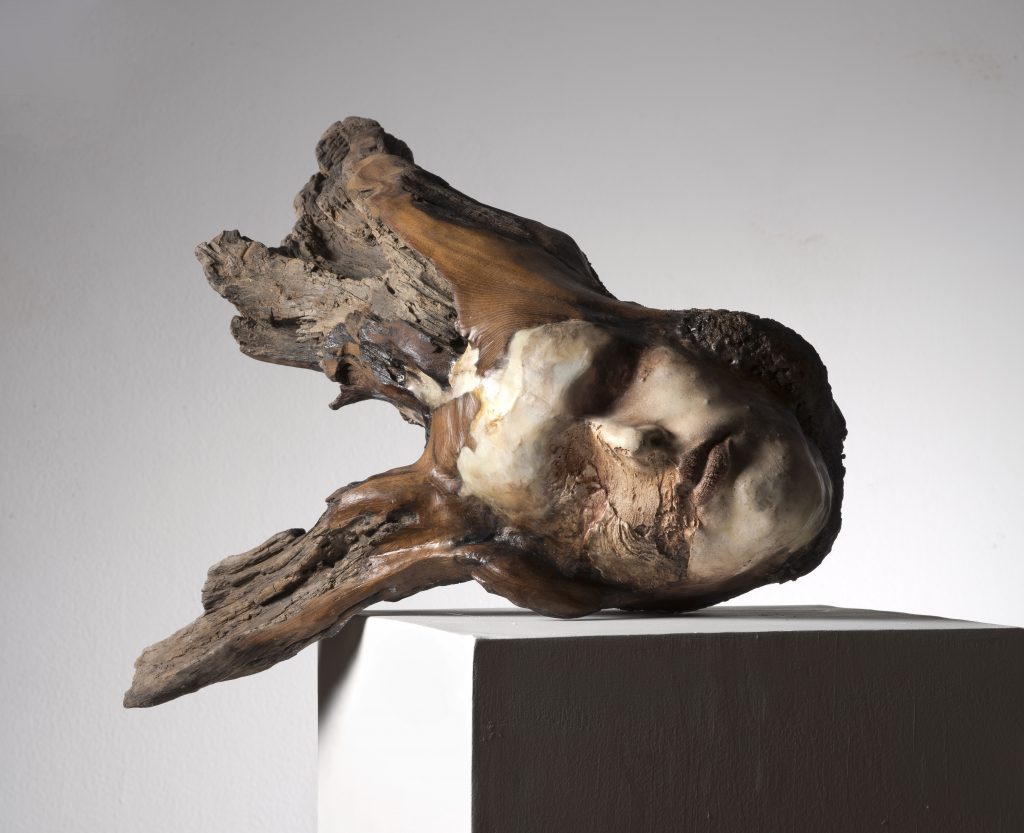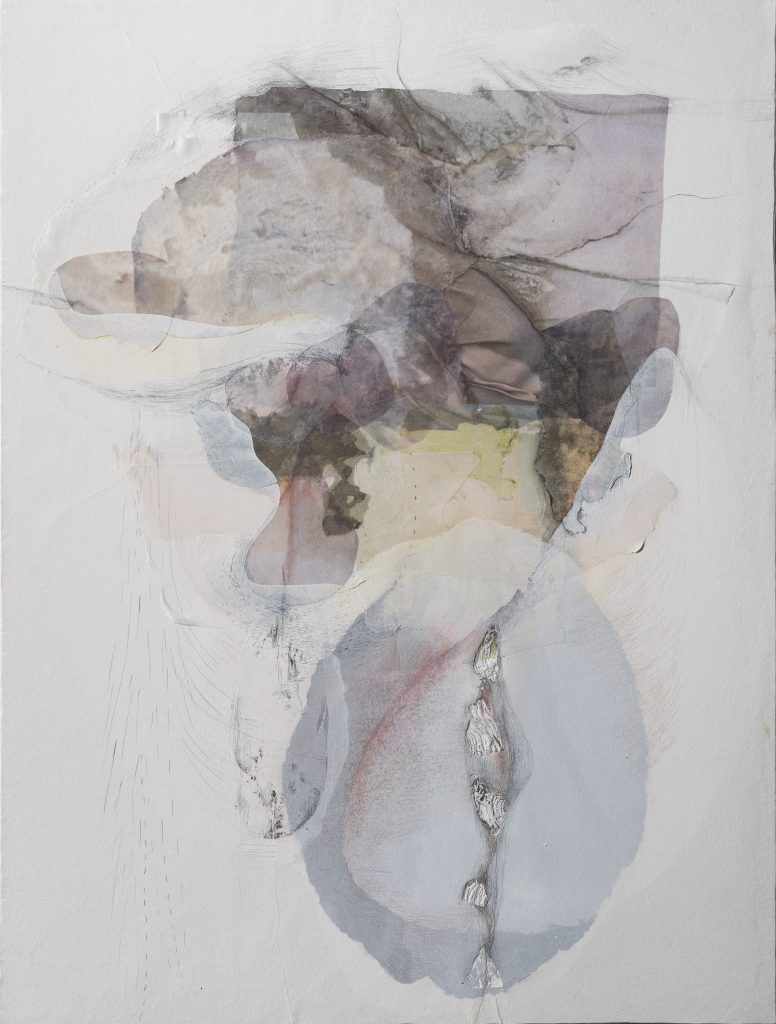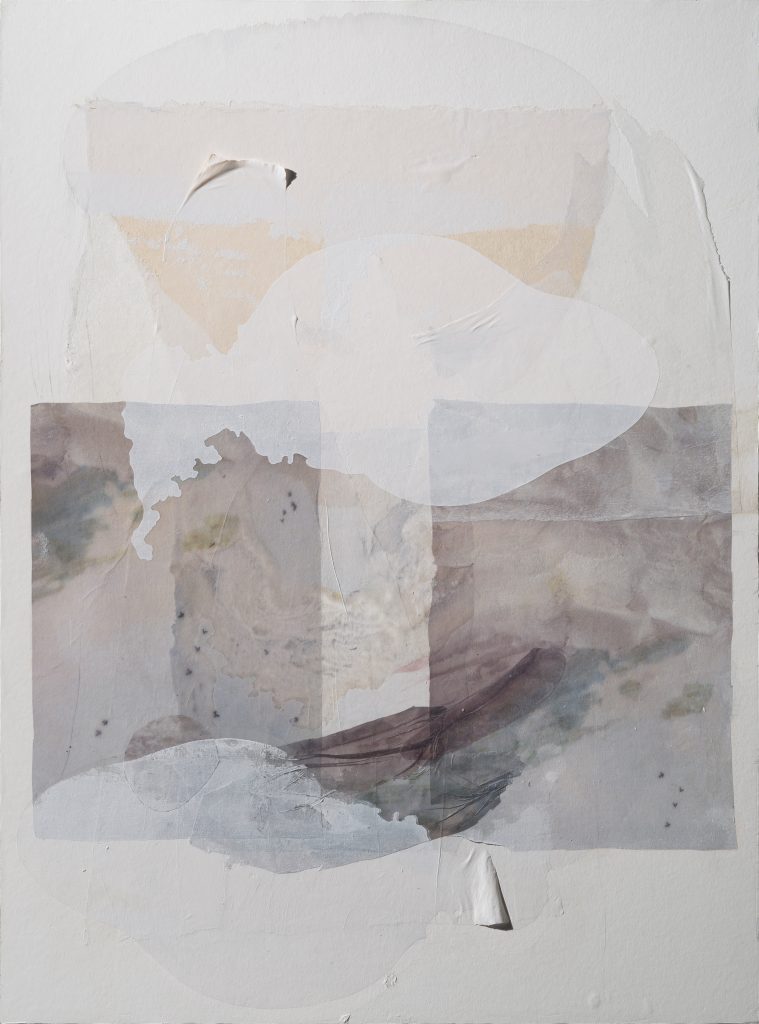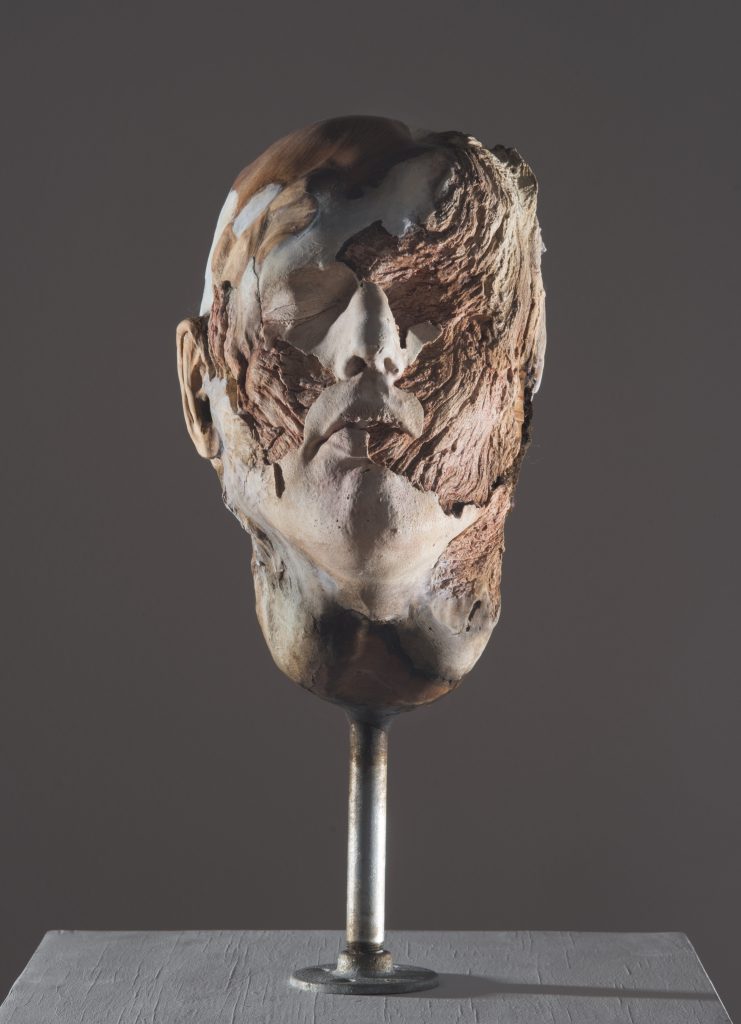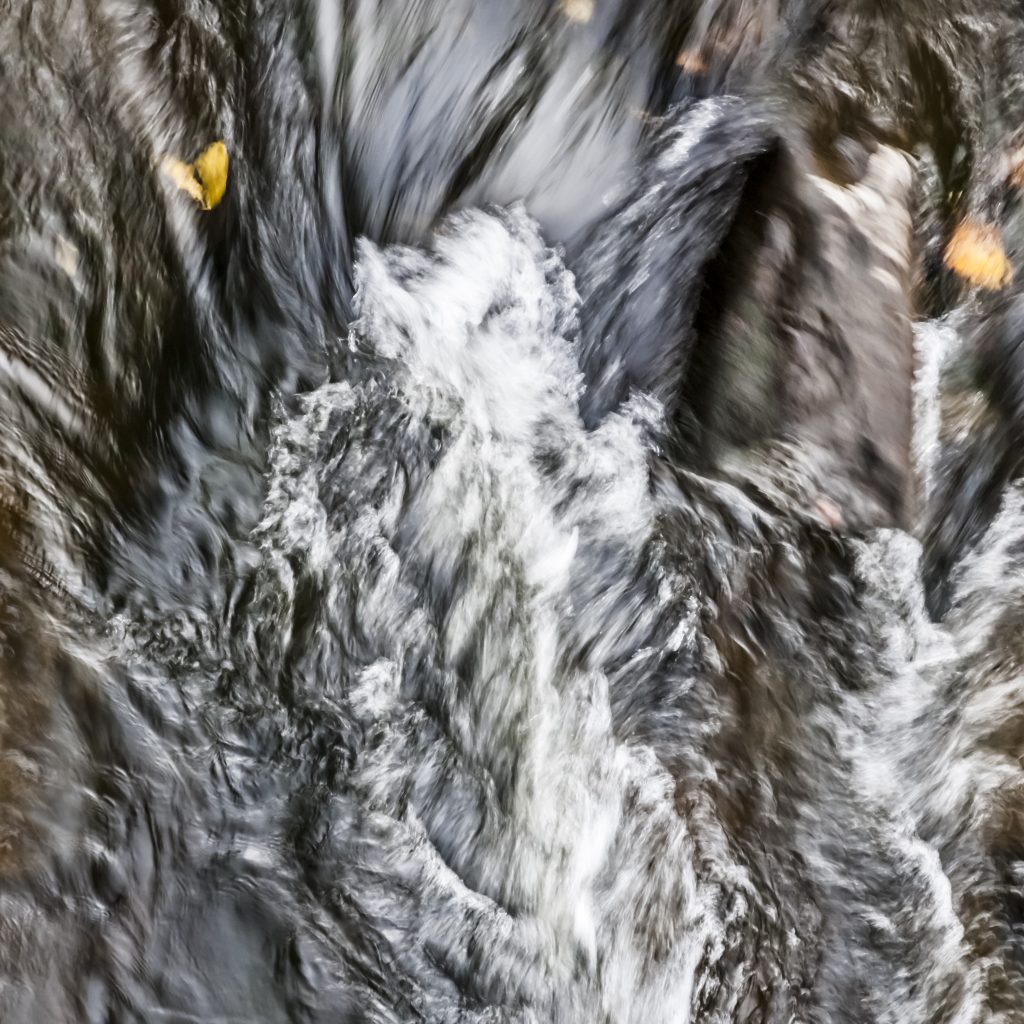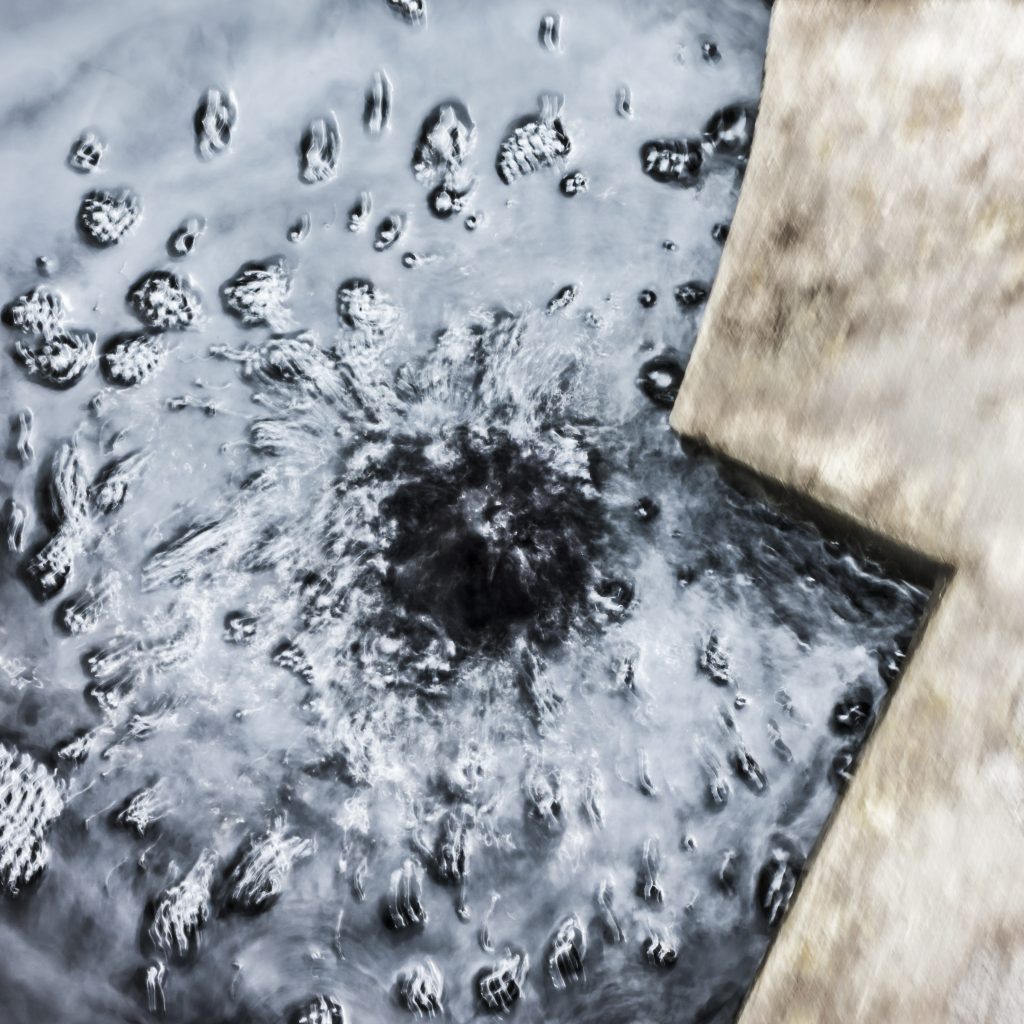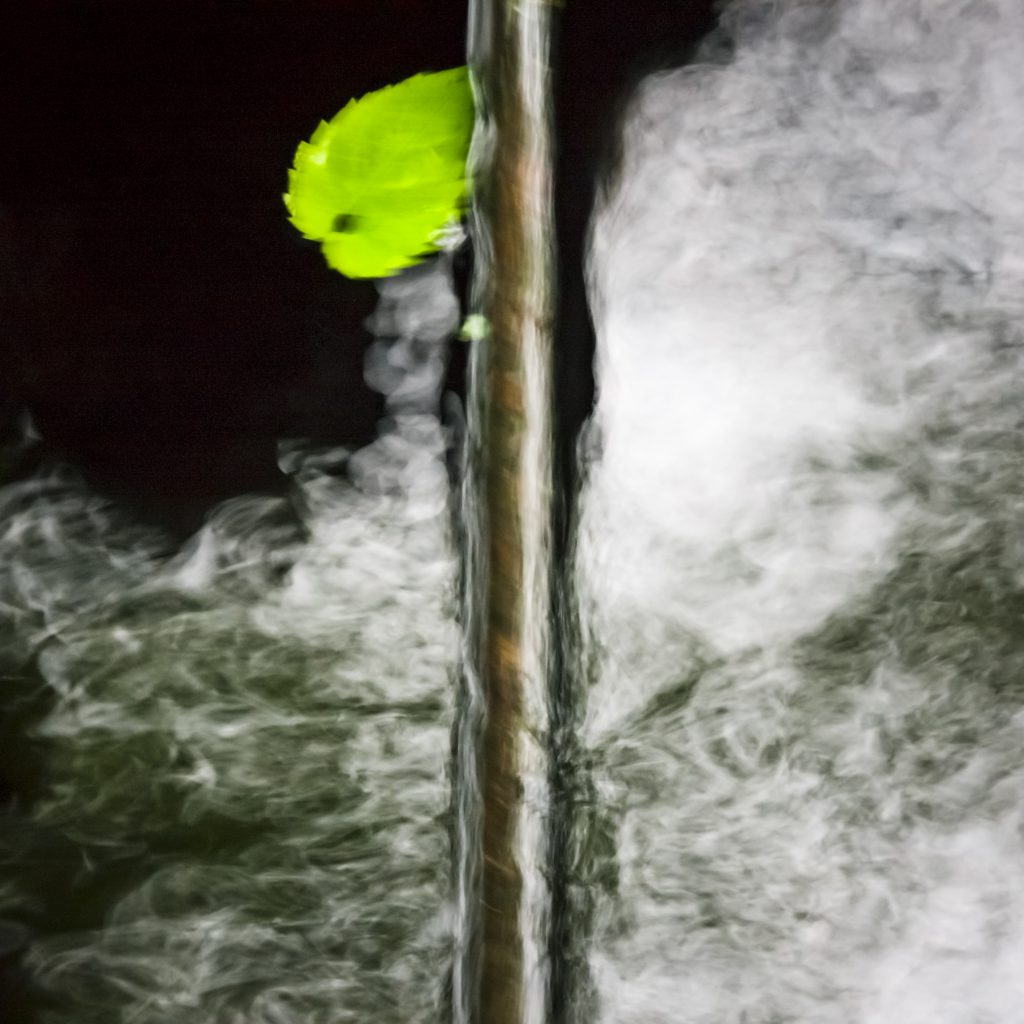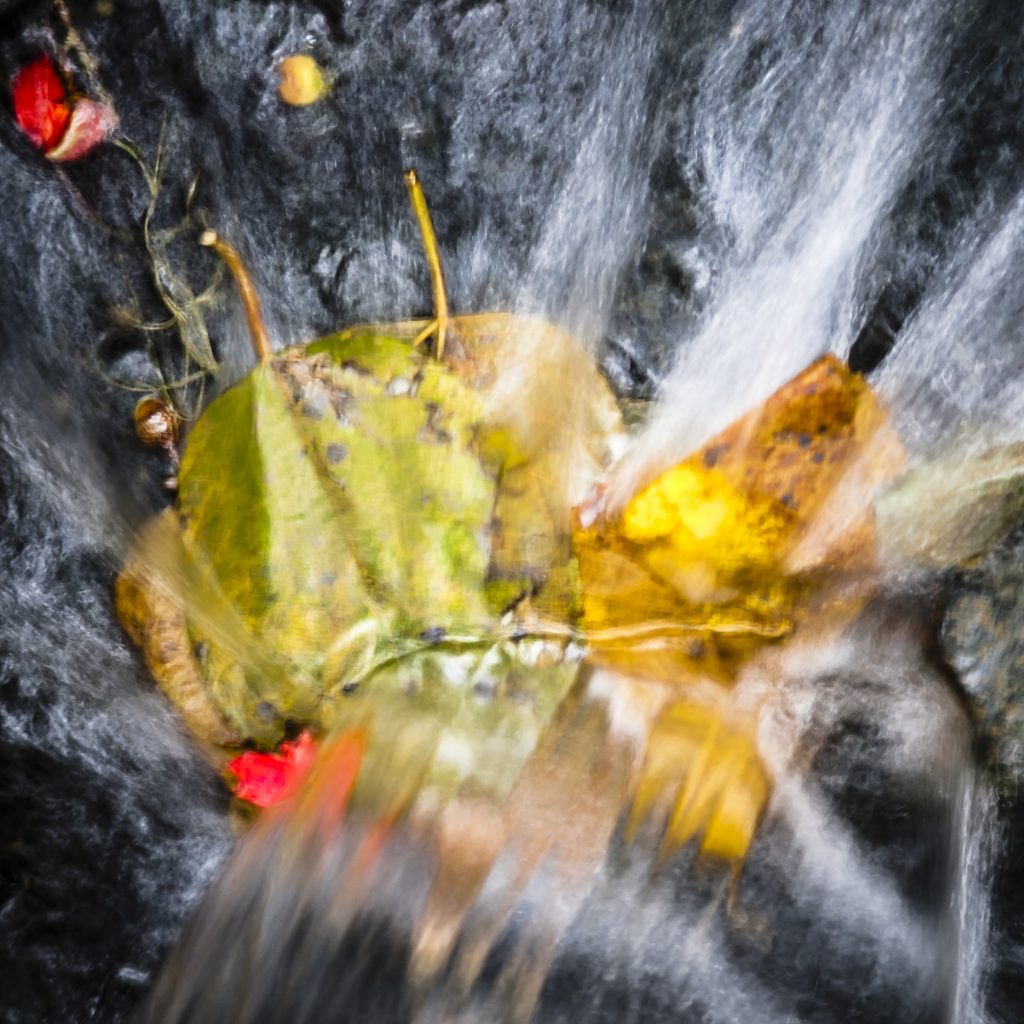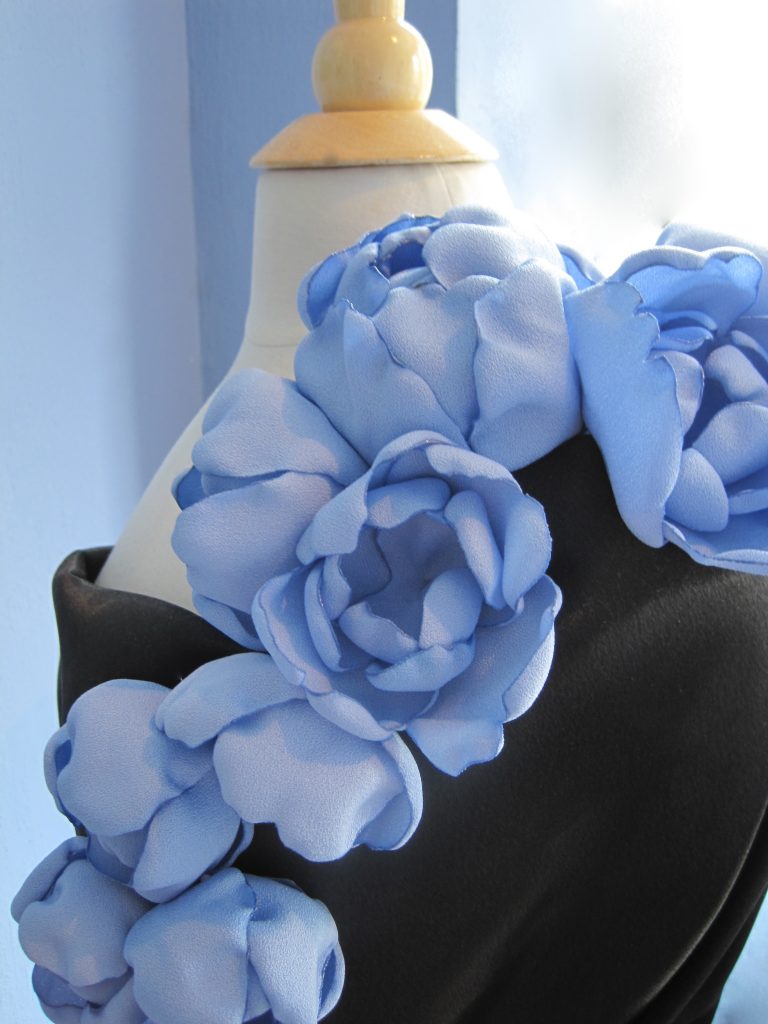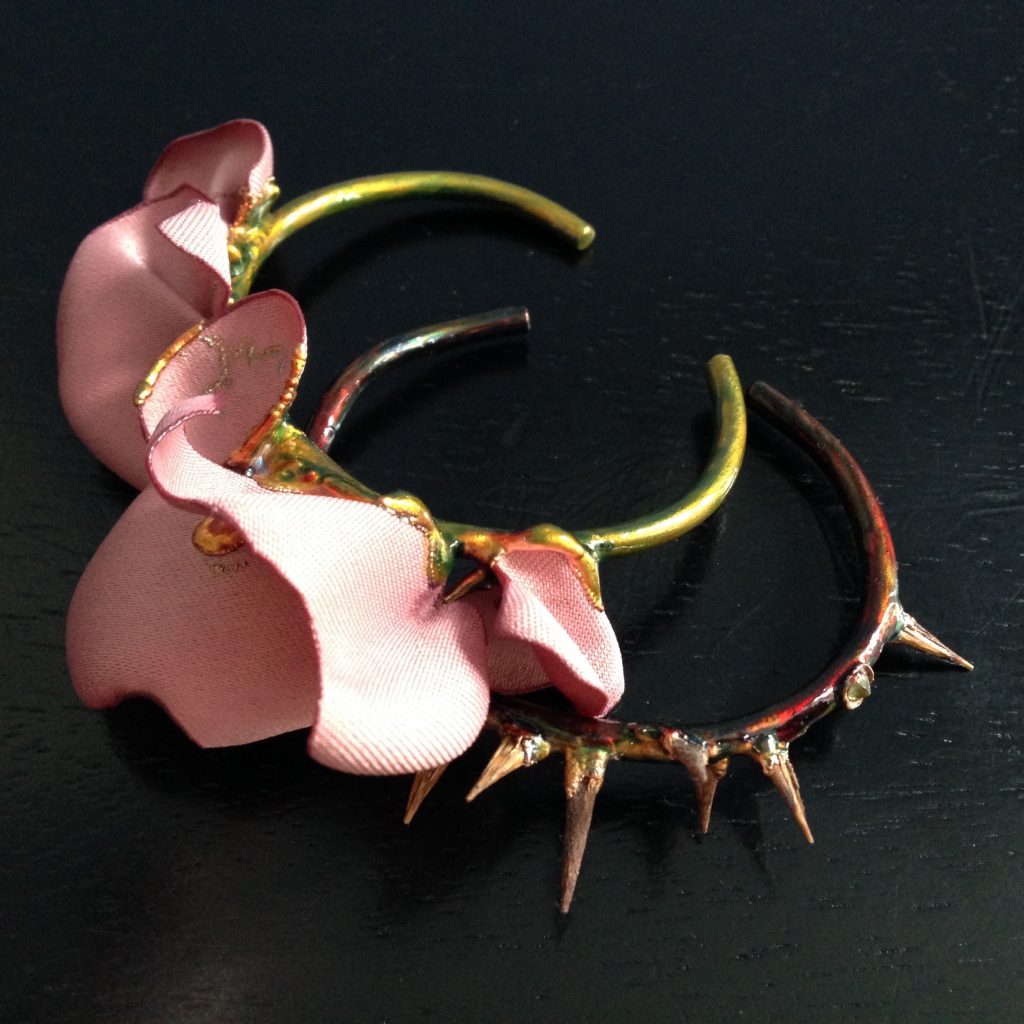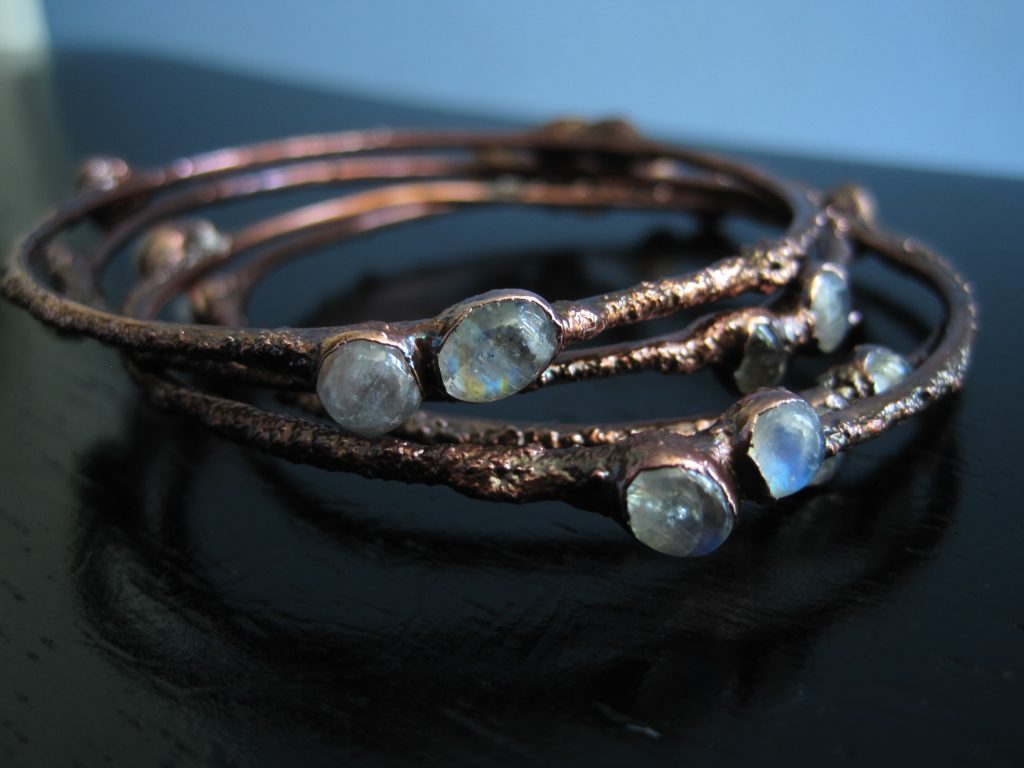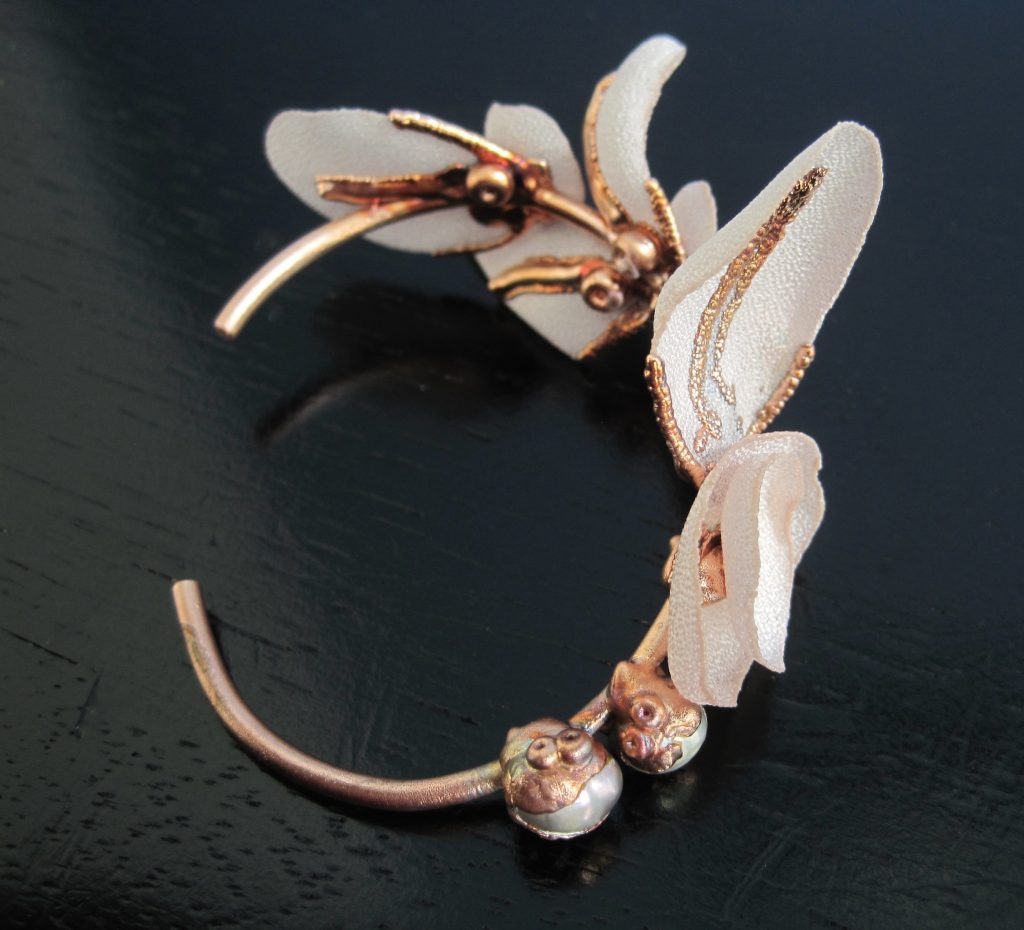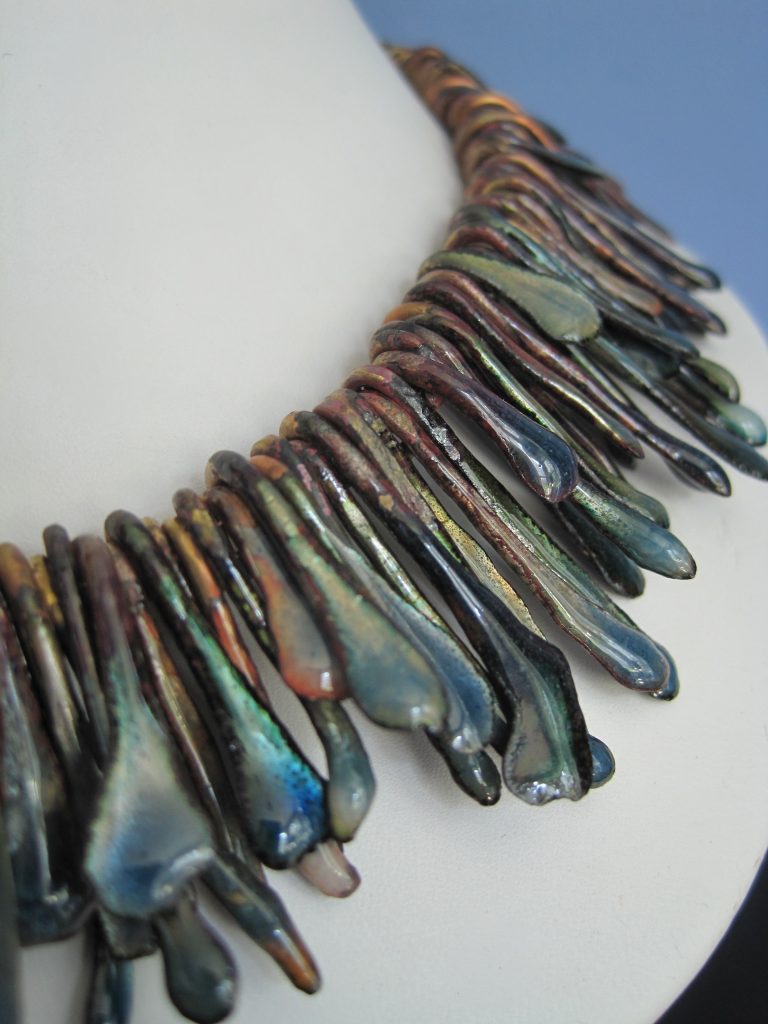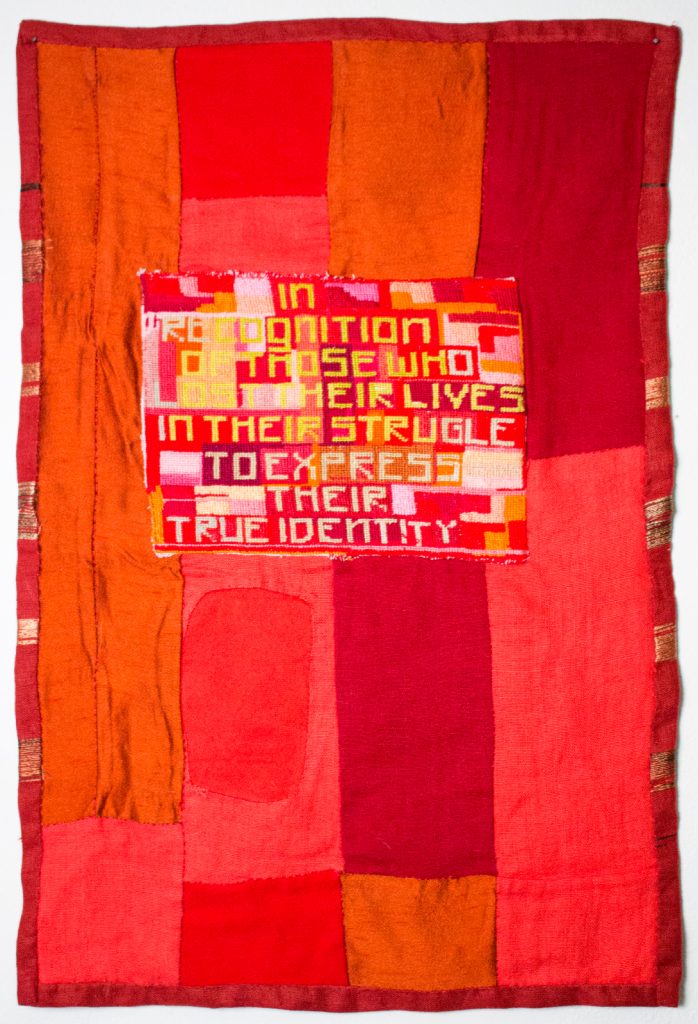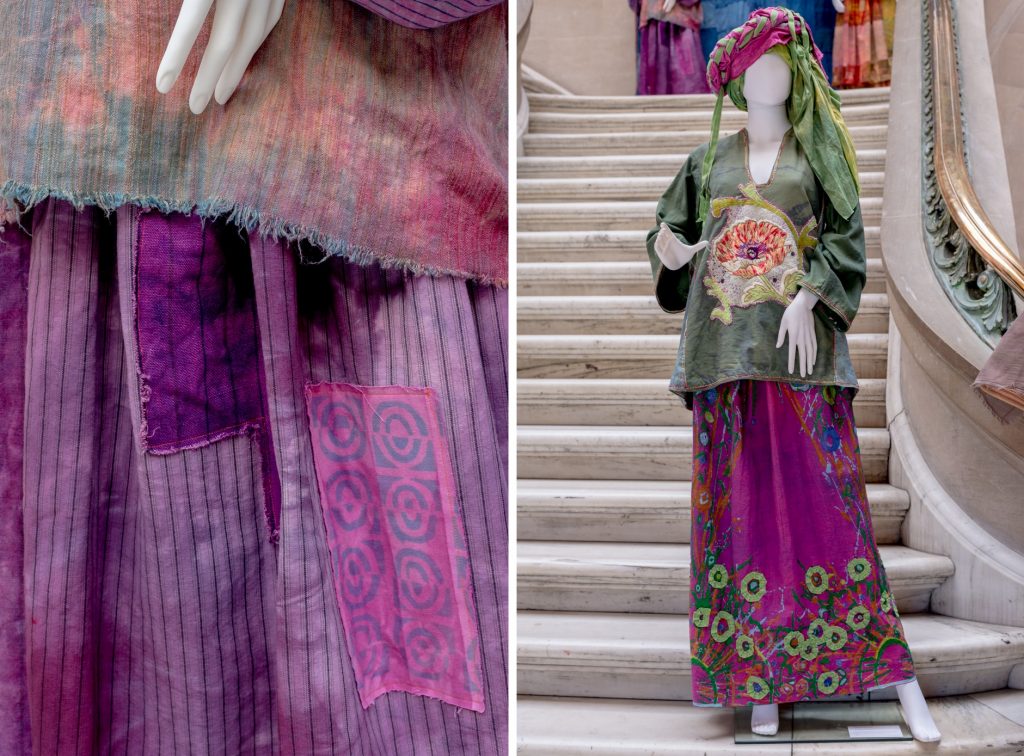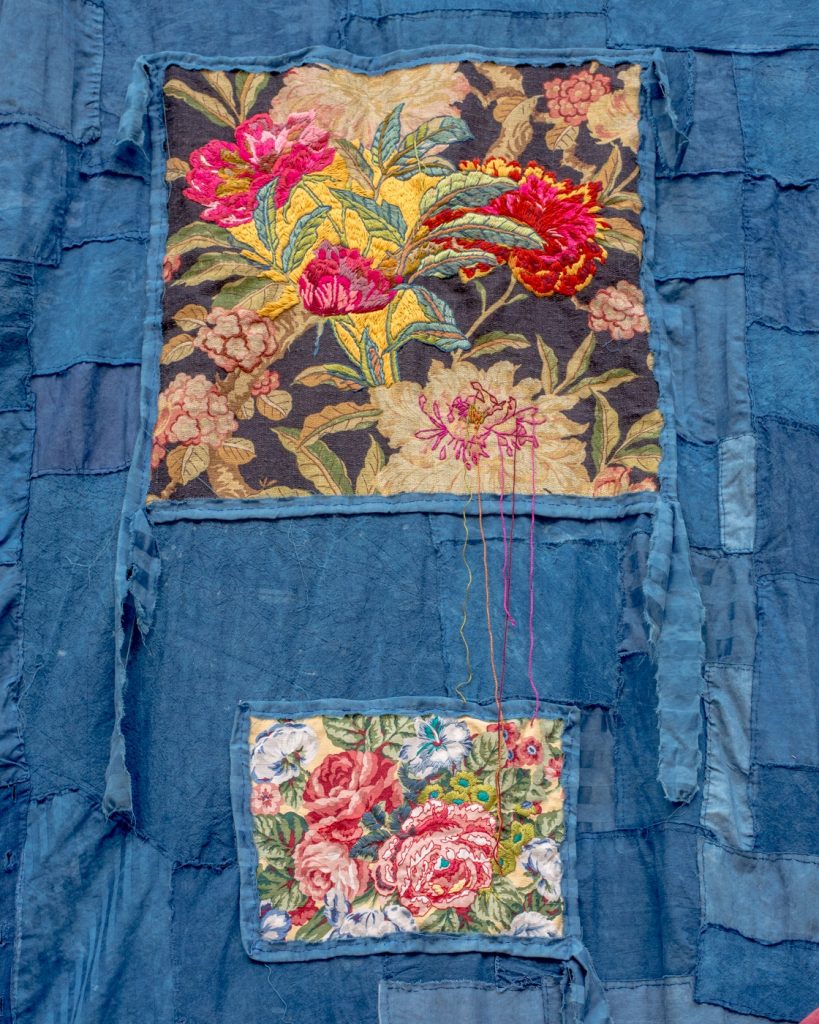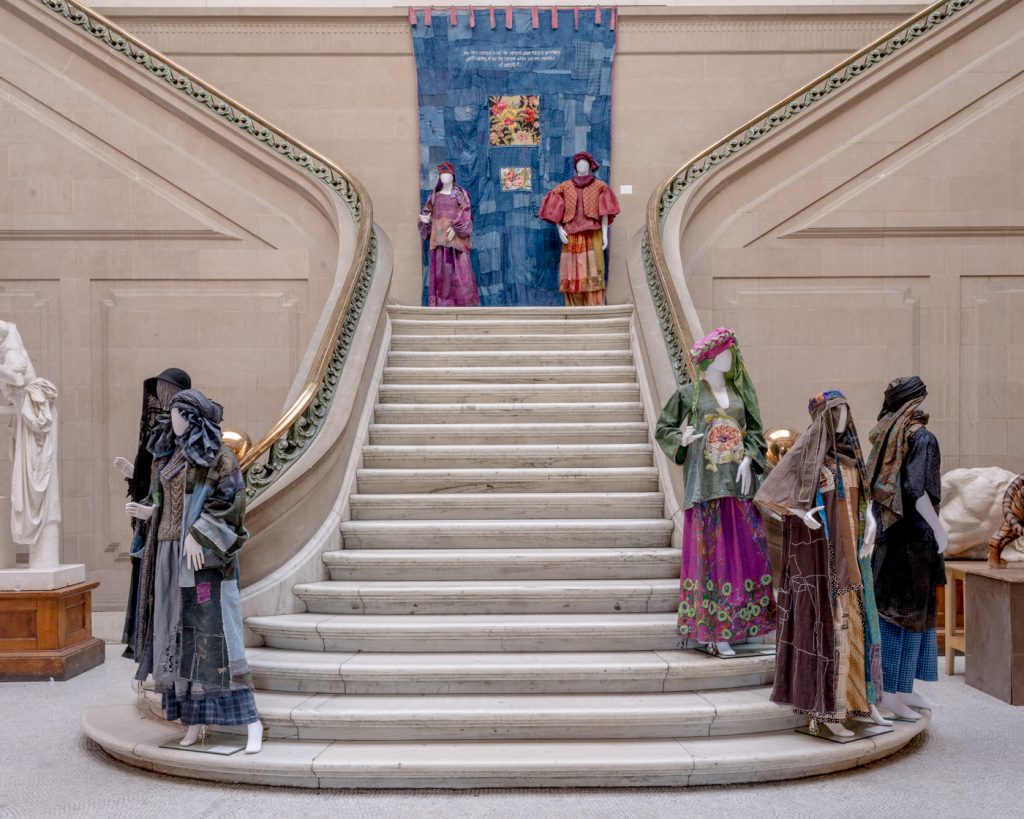Q. You’re BOPA’s Cultural Affairs Director. What does that mean?
A. I oversee the Cultural Affairs department, which carries out most of the arts council functions of BOPA, the city’s arts council, events center and film office. So that means we have grant programs, education programs for children and adults, an arts center at School 33 and exhibition spaces at the Bromo Tower and Top of the World. We work with other arts organizations in the city on different projects as much as possible to build up the arts community.
Q. Tell us a little bit about your history. When did you begin working at BOPA?
A. I moved to Baltimore 17 years ago in 1999 from Martha’s Vineyard, Massachusetts. I began working in Baltimore at the Baltimore Museum of Art, where I was administrative assistant to the contemporary art and painting and sculpture departments. I moved to BOPA in 2002, and I’ve been here since then.
Q. What roles does the Cultural Affairs department play in the arts community specifically with opportunities for artists?
A. We work very closely with the events department here at BOPA to offer employment opportunities for artists—to present their work, design work, to help us install work and perform at various events like Light City, Artscape and the Baltimore Book Festival. We also work in partnership with many different groups to strengthen the arts community by administering grant programs such as the Creative Baltimore Fund, Free Fall Baltimore, Neighborhood Lights, the Transformative Art Prize and Lots Alive program that fund art projects within the community. These are all programs that bring together artists and communities, to enliven our neighborhoods and provide artists with opportunities to work in the community.
Q. People might not realize the importance BOPA places on arts education. Can you talk a little bit about BOPA’s arts education initiatives?
A. We have a program called Bright StARTs, which works with already established after school programs to provide arts education to students. We provide artist teachers and supplies and place the teachers in various after school programs as needed. After school is such an important time, a lot of kids have parents who work so they go to after school centers until their parents come home. Helping the centers with quality programming is a big part of the Bright StARTs program.
We are also beginning a program that will focus on Baltimore City artists that are involved in the 2017 Light City festival. The program will feature them along with educational information for teachers so that they can use the information in their classrooms to explain contemporary art and show it to their students. It’s often an area that teachers are not that well versed in and don’t understand well, so this is going to help them not only to find out what artists are doing in Baltimore but to find out what contemporary practices are in place. It’s a tremendous opportunity to involve the teachers and through them their students in the kind of work that’s going to be on display at Light City.
We’re also going to be starting a new program called the “Youth Arts Council” where we’re inviting teens who are interested to develop and execute teen activities for our major events like Light City, Artscape and the Book Festival. We’re also going to be focusing them on policy, how policy is developed particularly around art education in schools. This will kick off in the new year.
Q. What is your favorite program that you’ve worked on through BOPA and why?
A. I’d say Free Fall is my favorite. We developed it in 2006 and I’ve been the person that marshals that program every year. I love to give people the opportunity to perform and show what they do. It’s not just performance, but speakers, readings, dance, theater and film – it’s a wide variety of artistic practices that go on in the city that are all highlighted by Free Fall Baltimore. I think it’s the program that covers the most territory, and it’s sort of a unique model in that we work with organizations that are doing programming already and provide them with marketing by sending people to the website. So it really is an open invitation to the city to participate and to explore the cultural activities and opportunities that are out there.
Bonus Questions…
Q. How did Free Fall get started?
A. Free Fall got started in 2006 when the Baltimore Museum of Art (BMA) and the Walters came to the city and wanted to eliminate ticket prices to get into the museums. They wanted support from the city for that for a certain number of years, and we went to bat with them for that and the city agreed. In discussion, we felt like this needed to be bigger than just the BMA and the Walters, and we wanted to have the entire cultural community participate. So we said lets expand on the idea of free entry for the museums and ask the cultural community to do free programming in October. The first year we did October and November but we chose October because it’s National Arts and Humanities month, which is a federal designation that the whole country participates in. We felt like this was the best way to involve the community and to provide them with opportunities to enjoy everything that Baltimore has to offer culturally.
Q. Do you ever find that it’s difficult to select a recipient when you have open applications for artists and communities?
A. Luckily, we don’t have to pick the person or organization, we have a public process where we invite other folks in to take a look at the applications and make decisions. So we’re not in the position of choosing our friend or not choosing our friends. We bring in outside experts to take a look at the applications, that way we get a more appropriate way of dealing with entries and also outside expertise to make those decisions. I’m very glad we’re not in the position of picking and choosing the folks who are chosen for any of our projects. Using an outside panel is the industry standard for making selections.
Q. Anything else you want to add?
A. We have a great team in Cultural Affairs. We have 9 people [in our department] and everybody works their heart out for their own programs and the larger team. I think we’re doing terrific work in Baltimore and we’re trying to be more vocal about the work that we do and our achievements and the partnerships we have in the community. As the arts council, we want people to recognize us [BOPA] for all of the great things that we do.
Herbert Bearman Gallery at the Frederick Douglass-Isaac Meyers Museum, Curator: Marsha Reeves Jews
A brief interview with 2016 Open Studio Tour Artist: Sara Dittrich
Can you tell us a little bit about the work that you do in your studio?
I often take a multimedia approach, using sculptural objects, musical performance, video, and interactive electronic technologies to investigate the dynamic acts of listening, communicating and moving. Most recently though I’ve been obsessed with using doll push molds to create hundreds of tiny ears and feet out of clay. I find the repetitive process of using these molds very meditative. Philosopher Henri Lefebvre’s text, “Rhythmanalysis”, has inspired this latest body of work as he writes, “He listens—and first to his body; he learns rhythm from it, in order consequently to appreciate external rhythms. His body serves him as a metronome.” In Lefebvre’s text he further explains how the body is the first point of analysis when it comes to interpreting the myriad of rhythms that surround us (e.g. social, cultural, musical, biological, environmental). I use devices such as repetition, absurdity, and collaboration to filter in the physical rhythms and movements of the body created by the accumulation of footsteps, breaths, and heartbeats. These tools work together to place the viewer in the here and now, and create spaces to “just be”.
Artwork by Sara Dittrich
The entrance to the parking lot of the studio building is marked by black barrels. Once you turn into the lot, you will see a concrete ramp on your right. The entrance door to the studios is at the top of the ramp. You can park at the top of the ramp or at the bottom of it.
A brief interview with 2016 Open Studio Tour artist: Michelle Dickson.
Michelle Dickson in her studio.
Can you tell us a little bit about the work that you do in your studio?
I work in sculpture and drawing simultaneously, allowing them to inform each other, investigating the same concepts in distinct ways. From the moment they are created, they have both a physical presence and a growing absence, simultaneously existing and deteriorating in form. There’s an ephemeral aspect to it. It’s fragile—like memory. My drawings incorporate both collage and printmaking. My sculpture is formed from a combination of found natural materials like driftwood along with plaster, wax, and oil paint. Using layers, I allow some details to come through while others are obscured and buried. I work intuitively without much pre-planning: I make something and respond to it, adding on and then taking away, building up and concealing. I’m comfortable taking risks and never let the fear of ruining something stop me from experimenting. This is combination of curiosity as well as a desire to confront and accept uncertainty, which is a core idea expressed in all my work.
Neither Mine Nor Yours, 3 by Michelle Dickson
A brief interview with 2016 Open Studio Tour artist: Dottie Campbell
Artwork by Dottie Campbell
Can you tell us a little bit about the work that you do in your studio?
Since I capture photographs outdoors and develop and print them in another space, I use my studio to review photographs and group them into collections. My photographs are large in size and it’s great to have good lighting and enough space so I can stand back and review the effect of the print to see whether I’m happy with it.
I also use my studio space to work on other ways to use my photographs. I cut my prints into shapes and construct collages from them; I apply various artist materials on top of the ink surface of the prints to create mixed media artworks; I create three-dimensional forms using the natural curl of the photographic paper; I experiment with unique display ideas for photographic work.
Artwork by Dottie Campbell
In making my Blooms, I am inspired by form and volume and how far I can push that to make a piece that is still wearable in either an everyday context or for a special occasion. I love generous use of rich materials whether they are larger pearls or onyx beading or several layers of tiny seed beading, the layering of texture over the primary volume and form.
Most of my metalwork is done by electroforming and its creative process is opposite to my fabric work in that the texture usually takes first consideration with form and volume following after. In designing this work, I try to focus on personal nostalgia and specifically the way we collect tokens or specimens – sand, shells, pebbles – to remind us of places or people. In creating custom portable objects with a client’s personal specimens, they can share their stories about their tokens as they wear them, rather than having these natural elements sitting in a jar on on a shelf located where little conversation takes place. My production work typically focuses on textures and shapes found in marine life and abstracted to varying degrees.

